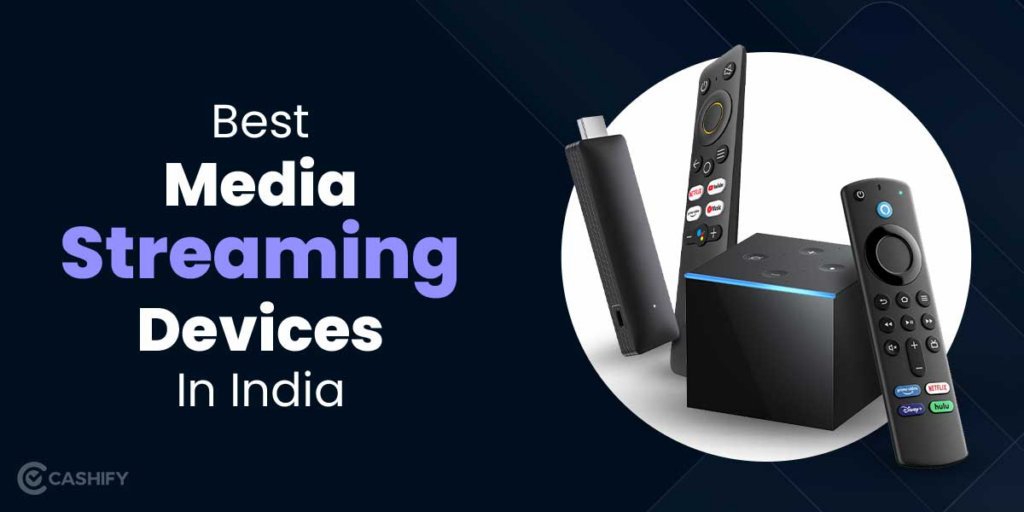Streaming dongles are small hardware devices that plug into the HDMI port of a TV to make it internet-connected and streaming-capable. Also called streaming sticks, these dongles run their operating system and streaming apps.
Popular options include the Amazon Fire TV Stick, Roku Streaming Stick, and Google Chromecast. Streaming dongles provide an affordable and convenient way to access online entertainment on the big screen.
Their plug-and-play functionality lets you quickly stream movies, shows, music, sports, and more from services like Netflix, Prime Video, Spotify, YouTube, and countless others.
With built-in WiFi and app stores, streaming dongles deliver smart features without having to buy a new smart TV.
This article will cover streaming dongles in-depth, including their features, pros and cons, popular options, and key differences from streaming boxes.

How Streaming Dongles Work?
Streaming dongles contain their own WiFi chip and processor in a small compact design that resembles a USB stick. The dongle plugs directly into any TV’s HDMI port which provides the video/audio signal. Power is drawn either from the TV’s USB port or an AC adapter.
Once connected and set up, the dongle provides access to an app store to install popular streaming services like Netflix, Disney+, HBO Max, YouTube, etc. These apps are operated through the remote to select and play content.
Some remotes also have microphones for voice commands. As long as the dongle is connected to the internet via home WiFi, streaming is now possible on the big screen.
Features and Capabilities
- Compact plug-and-play design for portability
- Stream in HD quality with support for 4K HDR video on premium dongles
- Voice control features through Alexa, Google Assistant integration
- Ability to cast or mirror content from mobile devices
- Expandable storage via USB and SD card on some dongles
- Gaming capabilities with access to mobile games on certain platforms
- Streaming channels like The Roku Channel, and Pluto TV for free content
- AirPlay support to stream or cast from Apple devices
- Options for customizable themes and interfaces
- Easy setup and switching between different TVs
- Constant app updates and new features via automatic software updates

Pros of Streaming Dongles
- An affordable upgrade to add streaming to any TV
- Small and portable makes it easy to travel with
- Easier to replace/upgrade compared to built-in smart TV platform
- Consistent app support unlike smart TV models
- Packed with features despite the compact size
- Do not require smart TV to get streaming features
- Top brands like Roku and Fire TV ensure reliability
- Simple plug-and-play setup taking only minutes
- Energy efficient due to low power draw
Cons of Streaming Dongles
- Still an additional accessory compared to smart TVs
- Require separate remote instead of built-in TV controls
- Some models support a limited number of HDR formats
- The dongle can clutter TV ports if space is limited
- Without an AC power adapter, can drain the TV USB port
- Limited onboard storage restricts the ability to install all apps
- Not all apps available on all platforms
- Video quality maxes out at the device’s supported resolution
Popular Streaming Dongle Models
Roku Streaming Stick
The most popular dongle in the U.S. with wide app support and affordable price. Runs Roku OS. Models range from HD to 4K.
Amazon Fire TV Stick
Second biggest dongle brand with Alexa integration. Stream Amazon Prime content. Lite and 4K models are available.
Google Chromecast
Cast or mirror media from a phone or computer. The basic model is HD while the new Chromecast with Google TV does 4K.
TiVo Stream
Runs Android TV with a focus on live TV streaming. Unique TiVo interface and features.
Nvidia Shield TV
The most advanced dongle focused on gaming streaming. AI upscaling, 4K, gaming controller included. More expensive.
Streaming Dongles vs Streaming Boxes
Streaming Dongles are compact, portable, directly plugged into TV, and can only stream in HD or 4K quality supported by the device.
Streaming Boxes sit near the TV, offer more processing power, and storage, advanced features like gaming, ability to play higher quality streams like 4K HDR but are less portable.
Both offer access to the same streaming apps. Dongles are the more affordable and travel-friendly option.

Frequently Asked Questions (FAQ)
Q1: Do streaming dongles require a smart TV?
Ans. No, streaming dongles work with any non-smart TV that has an HDMI port to connect the dongle and a USB port for power. They can add smart capabilities to even old TVs.
Q2: Can you use a streaming dongle internationally?
Ans. Yes, streaming dongles work internationally but streaming services and content libraries may vary based on region-specific rights. International usage will require a travel adapter.
Q3: Which apps don’t work on streaming dongles?
Ans. Most major apps are supported on top dongles like Roku and Fire TV. Niche services may not be available or need side-loading. Newer 8K dongles lack some app support.
Q4: Can you make international calls with a streaming dongle?
Ans. No. Streaming dongles only allow media streaming and do not support calling functionality as they are not phones. You would need a smartphone or VOIP service for international calls.
Q5: How often should streaming dongles be replaced?
Ans. Modern streaming dongles can easily last 3-4 years with good performance. Eventually, hardware limitations mean they may not support new streaming capabilities. Upgrading every 3-5 years is recommended.




